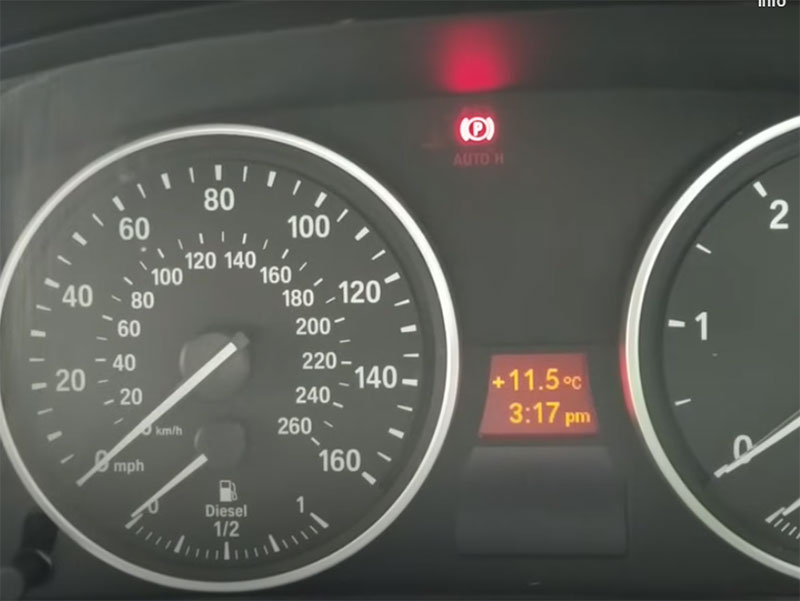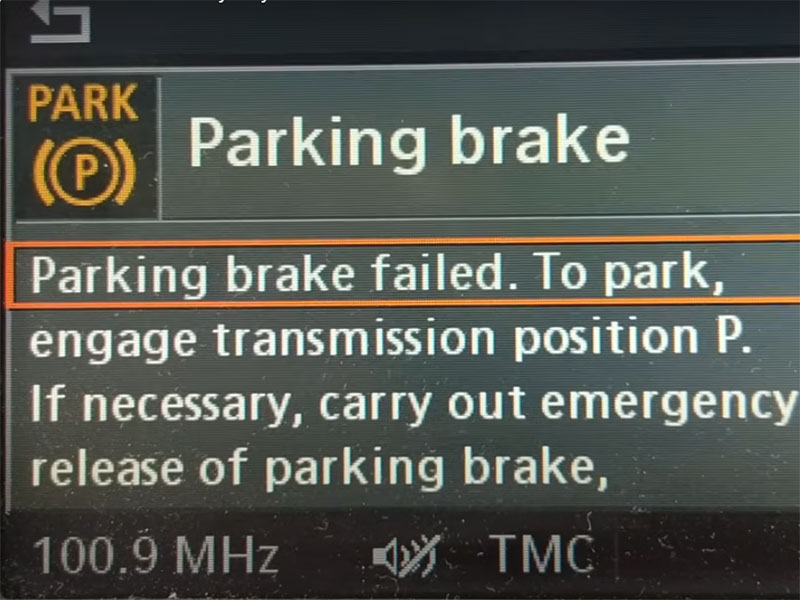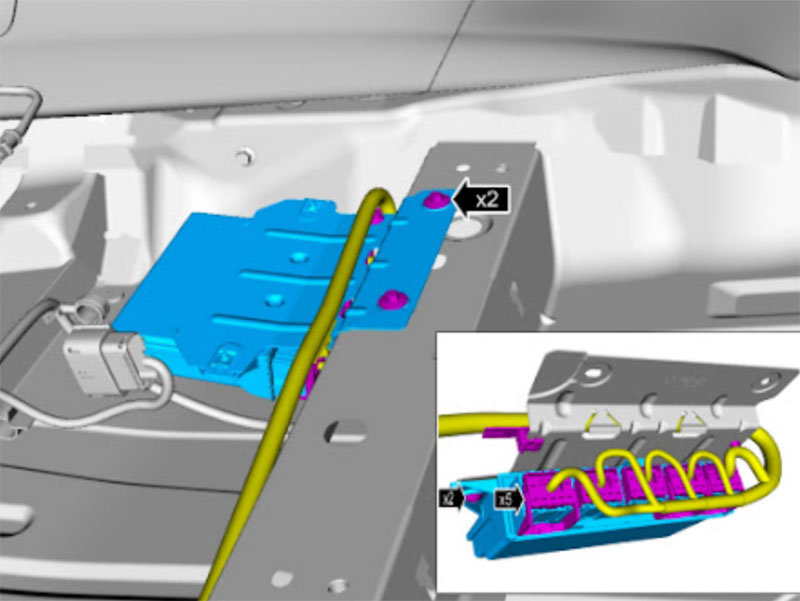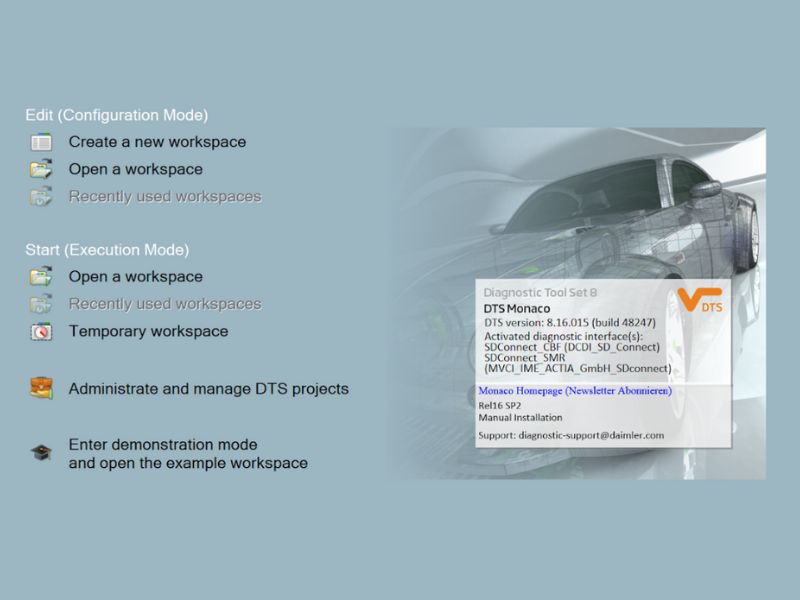The electronic parking brake (EPB) system is a smart safety feature that has become increasingly popular in modern vehicles, including the BMW This system allows the driver to engage or disengage the parking brake at the press of a button, making it more convenient and reliable than traditional manual handbrakes. While this system is typically quite reliable, malfunctions can occur from time to time, leading to issues with parking brake functionality.
In this guide, we’ll walk you through the steps to fix an electronic parking brake malfunction in a BMW. We’ll discuss common symptoms, possible causes, error codes, and provide a detailed troubleshooting procedure to help you resolve the issue.
Symptoms of BMW Electronic Parking Brake Malfunction
When your BMW’s electronic parking brake malfunctions, the following symptoms may appear:
- Parking brake not activating: You may find that pressing the electronic parking brake button fails to engage or disengage the brake. This can make it difficult to park the vehicle safely.
- Warning light: A warning light or error message may appear on the dashboard indicating a malfunction with the parking brake.
- Unusual sounds: You may hear grinding, clicking, or other unusual sounds when attempting to activate the parking brake.
If you experience any of these symptoms, it’s essential to address the problem as soon as possible to avoid safety issues while driving.
Causes of BMW Electronic Parking Brake failure
The primary cause of a malfunctioning electronic parking brake in the BMW is typically related to electrical issues. The most common cause includes:
- Faulty electrical connections: The parking brake system relies on the vehicle’s electrical system. A loose, damaged, or corroded wire can cause the system to malfunction.
- Control module failure: The electronic control module that manages the parking brake may fail due to various reasons, such as a software error or hardware malfunction.
- Low voltage: If the vehicle’s battery voltage drops below the required level (12V), it can prevent the parking brake from operating properly.

Common BMW Error Codes for Electronic Parking Brake Issues
When the BMW experiences an electronic parking brake malfunction, several error codes may be triggered. These codes can be read using a diagnostic scanner like an OBD-II tool or a BMW-specific tool like ISTA. Below are the common error codes for EPB malfunctions:
- C1001 – Electronic Parking Brake Actuator Malfunction
- Cause: A problem with the actuator that engages and disengages the parking brake.
- Solution: Inspect and replace the actuator if necessary.
- C1002 – Electronic Parking Brake Motor Failure
- Cause: Failure in the motor that powers the parking brake mechanism.
- Solution: Check the motor and wiring for faults, replace if necessary.
- C1003 – Electronic Parking Brake Switch Fault
- Cause: A malfunctioning switch that controls the parking brake system.
- Solution: Inspect the switch and connections, replace if faulty.
- C1004 – Low Voltage to Electronic Parking Brake System
- Cause: Insufficient voltage for proper parking brake operation.
- Solution: Check the battery and charging system to ensure they are functioning correctly.
- C1005 – Parking Brake Not Released or Engaged Properly
- Cause: The system fails to engage or disengage as required.
- Solution: Inspect the control module, wiring, and sensors, and replace if necessary.
- C1006 – Electronic Parking Brake Communication Error
- Cause: A communication problem between the control module and other ECUs.
- Solution: Check for damaged wiring or communication issues and resolve them.
- C1021 – Parking Brake Sensor Malfunction
- Cause: A malfunctioning sensor detecting parking brake status.
- Solution: Inspect and replace the sensor if necessary.
How to Fix BMW Electronic Parking Brake Malfunction
If you’re experiencing issues with your BMW electronic parking brake, follow these steps to diagnose and fix the problem:
Step 1: Check the Electronic Parking Brake Diagram
Start by checking the electronic parking brake (EPB) system’s electrical diagram. This diagram will help you locate the wiring, connectors, and components that control the parking brake. It is critical to ensure that all wiring connections are secure and there are no visible signs of damage or corrosion.
Step 2: Inspect the Control Module
The next step is to inspect the electronic parking brake control module. In most cases, the module is located near the central electronics unit in the vehicle’s interior, typically close to the gear shifter or dashboard. If the module is not working properly, it may need to be replaced. You can test the module using a diagnostic scanner, such as an OBD-II scanner, to read any error codes related to the parking brake.
Step 3: Check the Voltage
If the electronic parking brake still fails to work after inspecting the wiring and control module, check the voltage. The parking brake requires a minimum of 12 volts to operate correctly. If the voltage is lower than this, it could indicate an issue with the vehicle’s electrical system or battery.
You can test the voltage by using a multimeter. Place the multimeter probes on the battery terminals, ensuring that the voltage is at least 12 volts. If the voltage is too low, consider charging the battery or replacing it if necessary.

Step 4: Inspect the Red Wire Connection (Pin 11)
One critical area to check is the connection of the red wire to pin 11 of the electronic parking brake control unit. A loose or damaged connection here can cause the brake system to malfunction. Use the wiring diagram to locate pin 11 on the control module, and inspect the connection for any issues.
Step 5: Replace Damaged Components
If any components, such as wires or the control module, are found to be damaged, they should be replaced immediately. If the issue is with the red wire or the electrical connection, you may need to replace the wire or repair the damaged connection.
Step 6: Reset the System
After addressing any electrical issues, reset the parking brake system. You can do this by disconnecting the vehicle’s battery for a few minutes and then reconnecting it. This will clear any stored error codes and reset the system. Test the parking brake to ensure it is functioning properly.
Additional Tips for BMW Electronic Parking Brake Malfunctions
- Use diagnostic tools: For a more accurate diagnosis, consider using specialized diagnostic tools such as the BMW ISTA software, which can perform advanced diagnostics on the parking brake system.
- Regular maintenance: To prevent future malfunctions, ensure regular inspection of the parking brake system during your routine vehicle maintenance. Check for loose connections, damaged wires, and ensure that the control module is working correctly.
Special Offer!
If you are passionate about BMW vehicles and want to deepen your knowledge about BMW diagnostics, coding, and repair, we have some excellent book recommendations for you. These books cover everything from basic troubleshooting to advanced ECU programming, tailored specifically for BMW models.
Contact Us for Professional Assistance
If you encounter any difficulties while attempting to fix the electronic parking brake malfunction in your BMW Series 7, please don’t hesitate to reach out to us for professional help. Our team at Cardiagtech is available for immediate support.
Contact us via WhatsApp at +1 (641) 206-8880 for prompt assistance. If you are unable to reach us via WhatsApp, you can also contact us via email at [email protected] for further guidance and solutions.
We are here to help you get your BMW back to optimal performance in no time!




